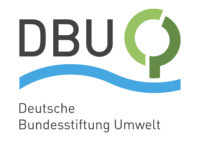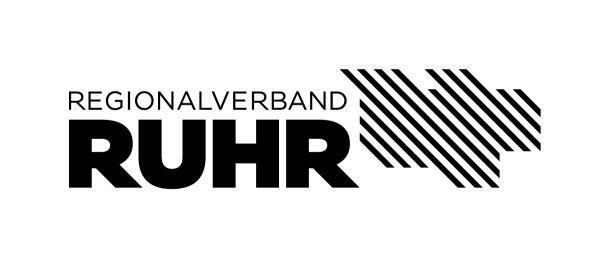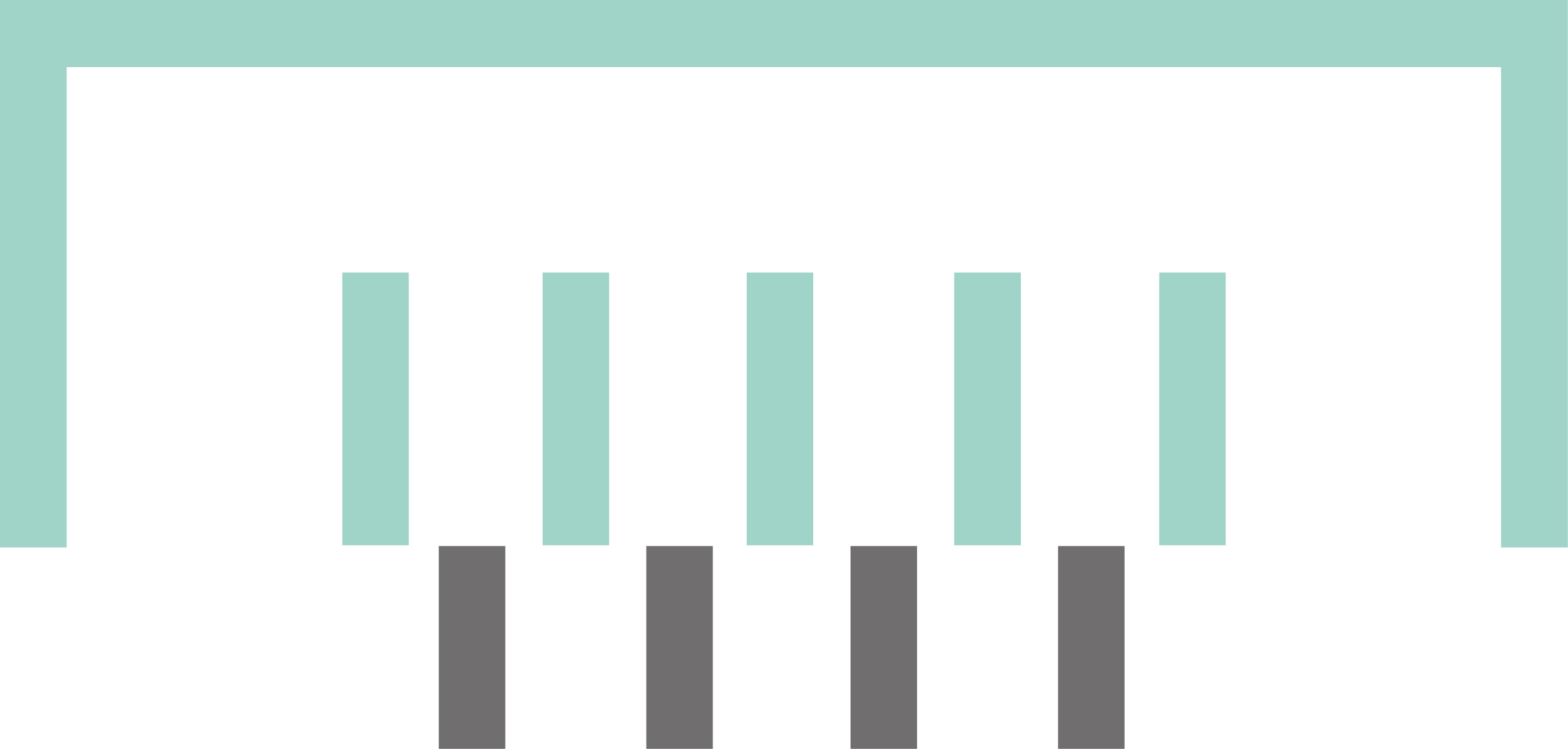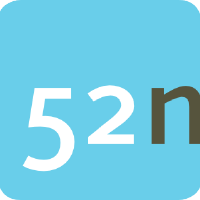MuM|Indukult Ruhr
Preserving industrial heritage - with and for the next generation
Industrial heritage is also exposed to climate change: Old headframes suffer from periods of heat when temperatures rise significantly higher than when they were built. Extreme weather conditions affect the structures of disused steelworks or coking plants. Cracks, flaking paint and other material damage occur, so that either expensive refurbishment is necessary or even demolition is imminent. The subsoil and thus the stability of the facilities is also affected by negative environmental influences such as drought or moisture. At the same time, the monuments of the industrial age are considered to be formative, identity-creating landmarks that need to be preserved as originally as possible in the future - not only in the Ruhr region, but in many comparable regions such as Saarland, Ibbenbüren or Aachen. This is where the “MuM|Indukult Ruhr” research project comes in.“MuM|Indukult Ruhr” stands for "Monitoring | Umwelteinflüsse | Modellbildung auf und von Objekten der Industriekultur im Ruhrgebiet“ – which means "Monitoring | environmental influences | modeling on and of objects of industrial culture in the Ruhr region" in english.“).
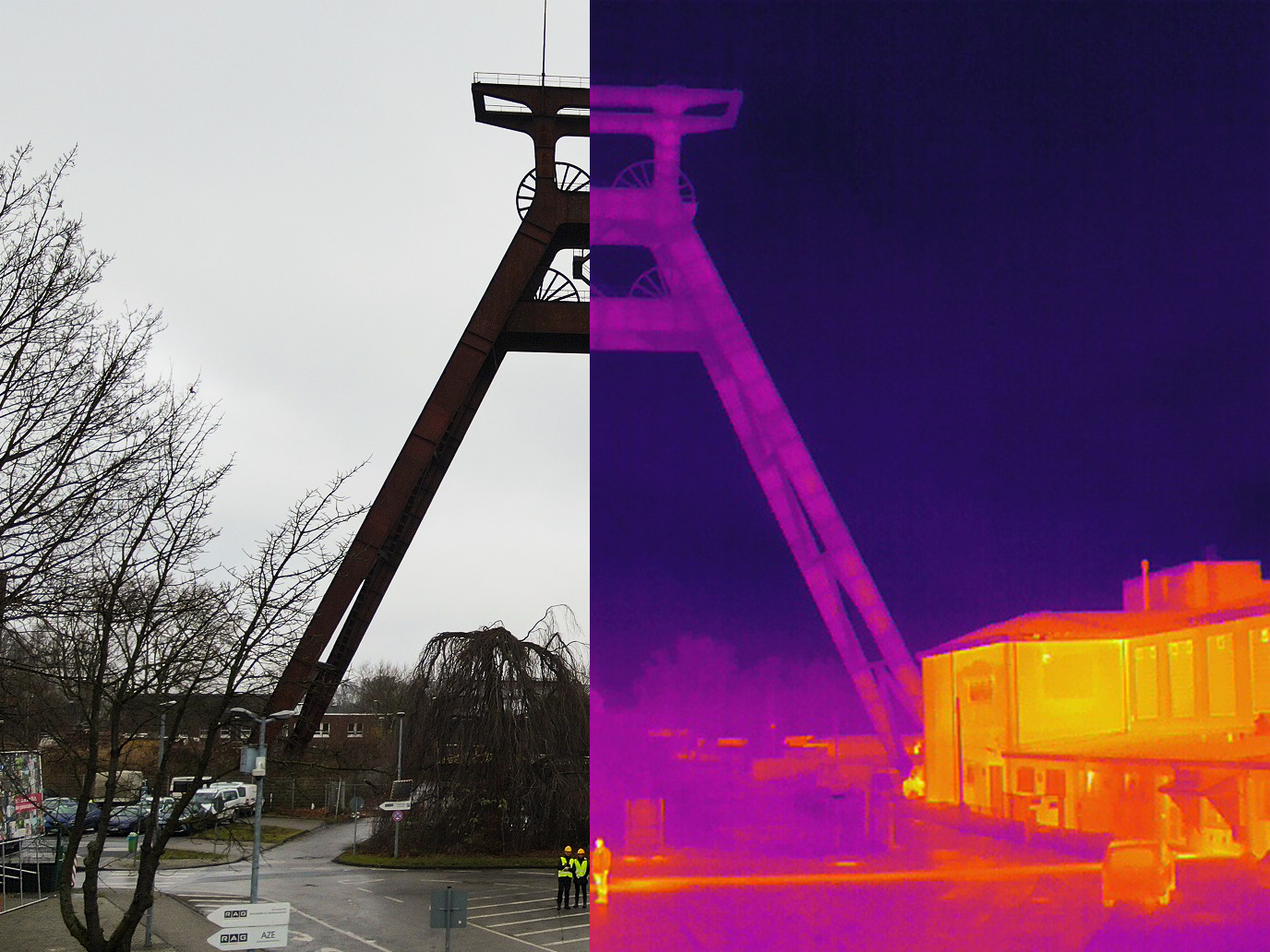
With the help of special sensors, the FZN's drones can visualize material damage to objects of industrial heritage that cannot be seen with the naked eye - like here on the steel headframe of the Pluto colliery in Herne. (© FZN)
As part of a feasibility study, the Research Center of Post-Mining is developing an innovative method for the non-destructive assessment of the condition of monuments of industrial heritage. Drones equipped with optical, thermal and multispectral sensors are being used for the first time. They collect important data, which is viewed in a fused form and thus makes it possible to view the complex buildings comprehensively and with high spatial, temporal and three-dimensional accuracy. Together with the Ruhr Regional Association – which is responsible for the monuments on the Industrial Heritage Route, representative buildings are selected for this purpose. In cooperation with the materials science research department of the German Mining Museum Bochum the FZN is gradually creating a database of damage images that can be used as a reference for comparable damage in the future.
n the long term, the high-precision 3D models are to be integrated with all information into the spatial data infrastructure of the Ruhr metropolis and thus made available to a broad public. The interest is not only great among material scientists: this data also serves as an important basis for a wide range of issues for specialists in the fields of history, architecture and monument preservation. The associated partner and IT service provider 52° North Spatial Information Research GmbH is supporting the project in order to develop new, easy-to-use software for these interest groups in a further funding phase.
The Martin Luther-Hauptschule Hamm is another aspect of the project: The pupils will accompany the implementation of the geodata in the “route.industriekultur” app. FZN and RVR are also planning to set up a school laboratory and want to jointly develop appropriate training materials to get young people interested in the preservation of industrial heritage in general, but also in possible career paths in this field.
Partner
Project objectives
- Development of an innovative method for data collection and analysis on monuments of industrial culture that are affected by anthropogenic environmental influences
- Digital simulation of possible processes and development of long-term risk management for mining consequences
- Working with teenagers and young adults to integrate high-resolution 3D models into the “route.industriekultur” app to impart knowledge and strengthen regional identity
- Linking digital and material science aspects of heritage conservation in order to increase the attractiveness of the professional field and communicate post-mining research as an important task for the future
Contact

Dr. Bodo Bernsdorf
Technische Hochschule Georg Agricola, University
Herner Street 45
44787 Bochum
Building 2, room 106
Phone 0234 968 4210
Mail bodo.bernsdorf@thga.de
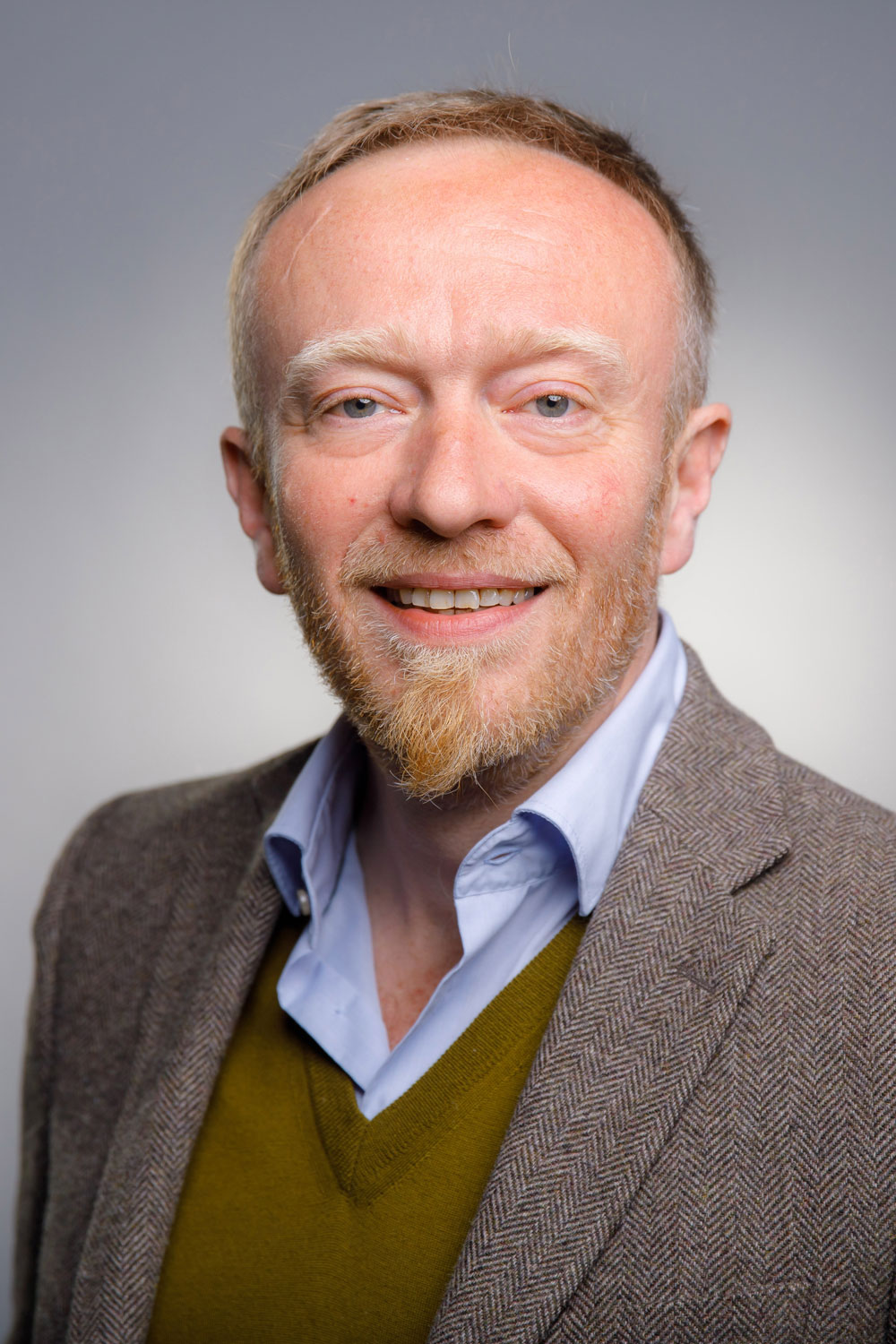
Prof. Dr. Michael Prange
Technische Hochschule Georg Agricola, University
Herner Street 45
44787 Bochum
Building 5, room 316
Phone 0234 968 4043
Mail michael.prange@thga.de


